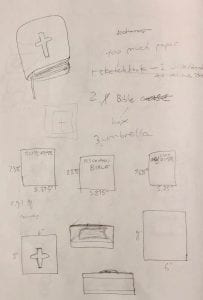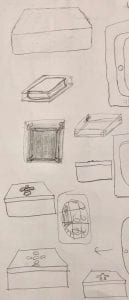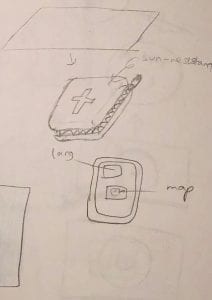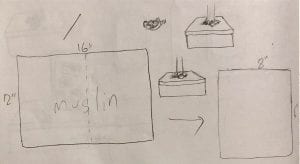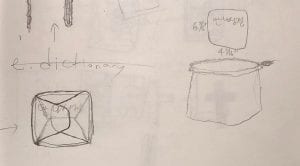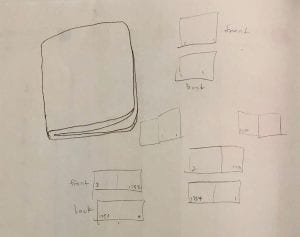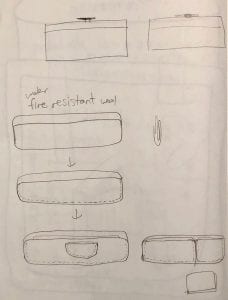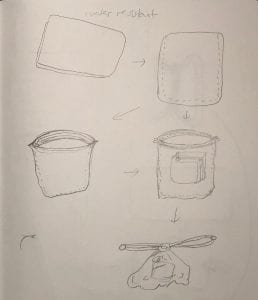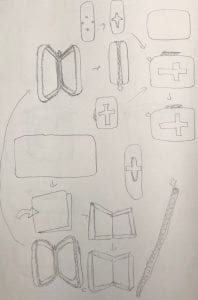1. Our final vocabulary word for this semester is urban resiliency. How would you define this term for a friend? What is an example they would understand? How important is the concept of resiliency to you as an artist/designer? How might it help you creatively live and work in relation to the realities of climate change? Do you have any questions about our semester vocabulary?
To a friend, I would define the urban resiliency as the capacity of communities within a city to survive, adapt, and prosper in spite of chronic stresses and acute shocks, such as disasters. One easy example would be New York City after the Hurricane Sandy, and Tokyo after their numerous earthquakes could be another one showing the urban resiliency. As an artist, the concept of resiliency is important to me as it would allow me to seek different perspectives to contribute to the society and help the suffering people in the case of crisis. The realities of climate change are capable of resulting in greater damages in the future, which urges everyone with capabilities to work together to protect ourselves. With that in mind, I can constantly attempt new ways that could work better instead of simply being satisfied by the familiar methods. As for our semester vocabulary, it took me some time to realize that the biofabrication was referring to the experiments we did.
2. Complete your Zone Walk project. Upload your map, images and responses to the questions to your LP. Come to class ready to present question #5: Choose one zone (1-6) as your focus. What is a design idea you have that could communicate to the public what zone they inhabit? What kind of tool, device or signage would you make? Include a list of 3-5 challenges you would face in implementing this project in NYC (think about resiliency of materials, language issues, access to information, visibility during different times of day/during storms, diversity of publics etc.).
I am living within Evacuation Zone 6. It is a relief to learn where I inhabit because my hometown is very far away from the coast, meaning the hurricane is unlikely to occur here. My home is about one avenue away from the next, nearest evacuation zone. Parsons is located in Evacuation Zone 5. Since it is relatively safe compared to the coastal areas, I believe I feel prepared for the evacuation in NYC. I believe the website’s design is functional and easily used because the map manifestly indicates where the evacuation zones are and helps us find where we are living in. I like the colors that help me indicate which evacuation zone each region is.
I took a walk through the 13th street facing the West Village, and I decided to focus on the Evacuation Zone 6, 4, and 1. In Evacuation Zone 6, I saw many buildings that had stairs on the balcony and dogs. There, a puddle on end side of the road gave me a feeling that it could be vulnerable to water as it might get flooded when the rain downpours. Then, I walked to the Evacuation Zone 4, where I saw park, playground, basketball court, and several fences around them. Entering the basketball court, I observed a lot of pigeons and trash flowing on the ground. I assumed that hurricane would affect not only the humans but the pigeons and other organisms living near the area. The curved fences made me wonder how resilient would they be against the severe wind. I noticed that as I walked closer to the ocean, it was getting windier and windier. Last but not least, I maneuvered to the Evacuation Zone 1, where I noticed the Whitney Museum and other buildings close to the coast. There, I could imagine the possible damage in case of a flood. There were different people we see daily, such as drivers, bike riders, and joggers; they too, would be in serious danger in storm surge. For instance, I was not sure what I would do if I were a biker near the area in a case of emergency. Also, for the cars and drivers, although they are relatively more protected, excess water would slow down and damage their cars, they would get stuck in the middle of roads. There were trees shaking from far away; they would stand no chance against the storm.
An awareness of evacuation zones does change the way I experience the city because imagining how vulnerable the streets could be against the storm keeps me alert about resilience. Without a doubt, zones closer to the coastal area, where one can visibly locate the water, seem relatively more vulnerable to storm surge. I live in the middle of Manhattan where it is not part of any Evacuation Zone. I am not too sure if I feel prepared for a hurricane. From the walk, I did not encounter any visible effects of Hurricane Sandy, and I have not experienced a real hurricane in NYC yet, so it is difficult to tell. However, by preparing emergency resources could probably help me feel more prepared. Some of the buildings look nice and new, and if they are built after 2012, I think they likely included certain features to make the building more sustainable.
While the Evacuation Zone 1 and 2 are more dangerous, I think the Zone 3 or 4 need more focus, as they are the regions where it is still close to the coast yet far enough to not notice the problem right away. I would like to make some storm surge awareness posters that include various languages. I think it could be informational to non-English speakers while also beneficial to the general public. Besides, I love to work with different languages. Some possible challenges include making it artistically appealing, grabbing people’s attention, preparing durable materials that can last for a long time, and providing concise information that can be remembered easily.
3. Develop three final project ideas. What might you make and why? (an object, clothing, set of tools, skill manual, a design for connecting you to other people, animals or the earth, creates meaningful social connections with others etc.) Post your three ideas and include sketches for each idea (and bring these sketches to class next week).
In order to take a different approach, I started by thinking of the personal objects that can still be useful to me for next 50 years. First thing I could think was books; even though more and more people use e-books in these days, those data files would become useless if the electricity is not provided. The physical copies of printed books are always accessible for people to read. One downside would be that the books are vulnerable against the external factors like water, so some form of protection would be necessary for them to last long. Among those books, I think the bible is the book that can be a big part of my life regardless of my age, which seems to fit for this project.
Another object would be any form of personal identification, such as driver’s license or passport. No matter where I would end up in the future, I would still need something that can prove my identity to travel around or become a part of society. However, in the case of emergency, Hurricane, for instance, it would be difficult for someone who is busy evacuating to take the ID with him unless it is easily accessible or can be carried around all the time. While there is wallet for the driver’s license, it always takes a while to find where the passport is located.
Lastly, there are pictures that grab memories from the specific time in the past. Collecting yearbooks has been my hobby throughout my middle school and high school years. I even brought them with me to the college. Often times I enjoy taking a look at those old memories and think of the past. Nevertheless, the yearbooks tend to be huge and heavy, which makes them difficult to be carried around. Under emergency situation, I would have to give them up in order to make room for other things. If I could select some pictures that are meaningful to me and put them together in a smaller form (likely water-resistant), it would be easier to keep them with me. For this one I still need more time to make meaningful connection to the values covered in class.
After thinking this far, I figured that instead of creating a new long-lasting invention, which could require some skills beyond my level, I could design some accessories to protect and assist the items mentioned above. For example, I could design a box where my bible can be safely stored, or a passport case that can be used like a wallet. For the box, I think the easiest material I can get that is strong enough would be woods. It can be coated with glue or other substance to be water-resistant. I also thought of a design using a zipper, but it would not go too well with hard materials like woods. Maybe a waterproof muslin, if possible, could work. Furthermore, I would like to make a use of my kombucha leather from the science lab, which seems suitable for making a case for the passport. I could even decorate them with the natural dye to make them more visually appealing. I think those materials (from lab) are easy to obtain, as long as I have initial access to kombucha and food sources; even if the climate change affects the availability of some crucial chemicals needed in common manufacturing, one would still be able to collect the leather and dye when they need to repair certain parts.





